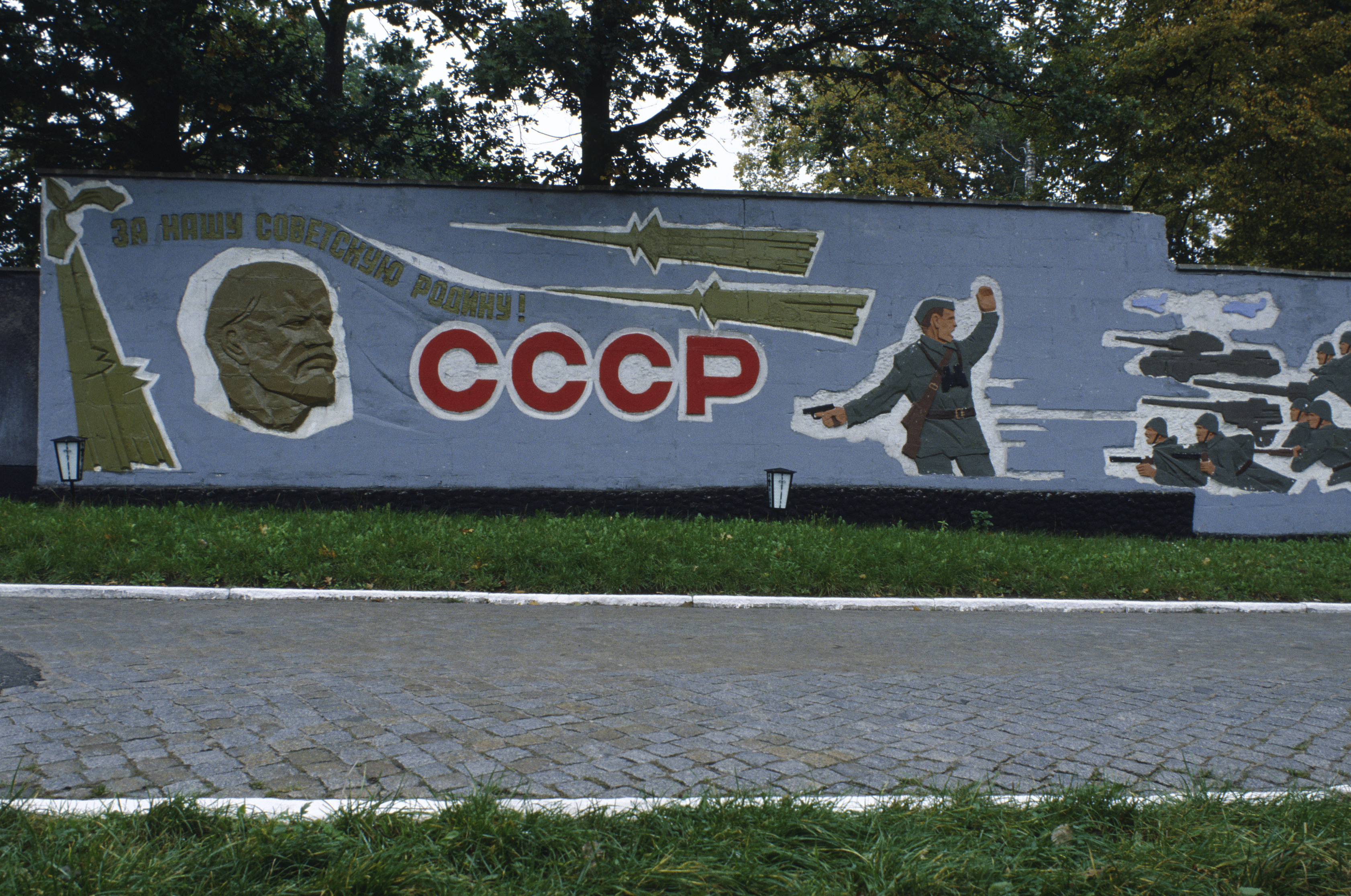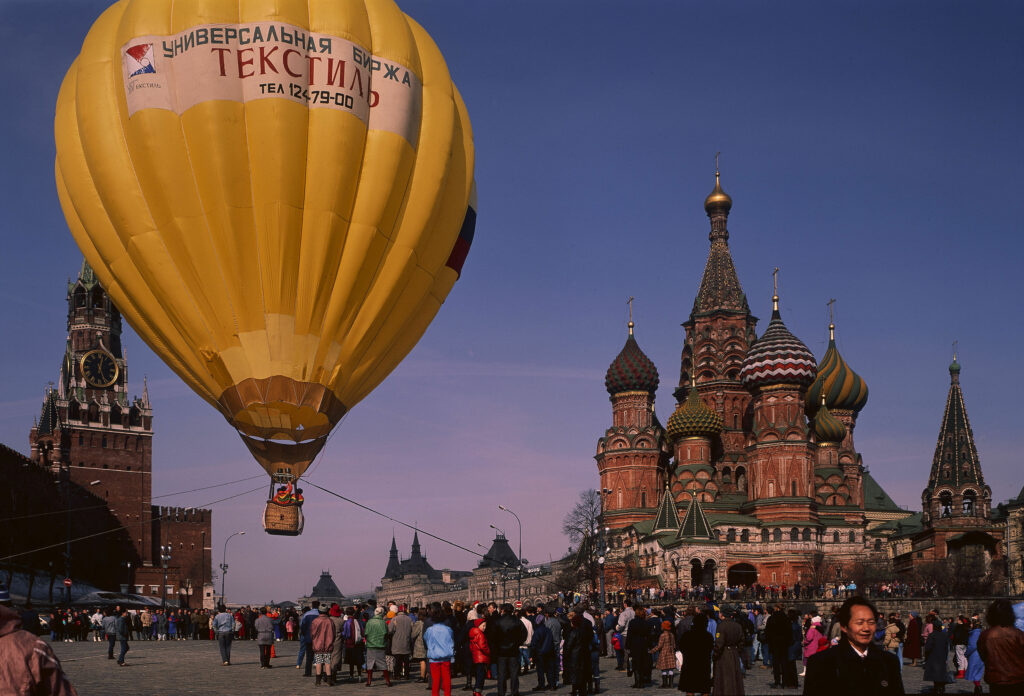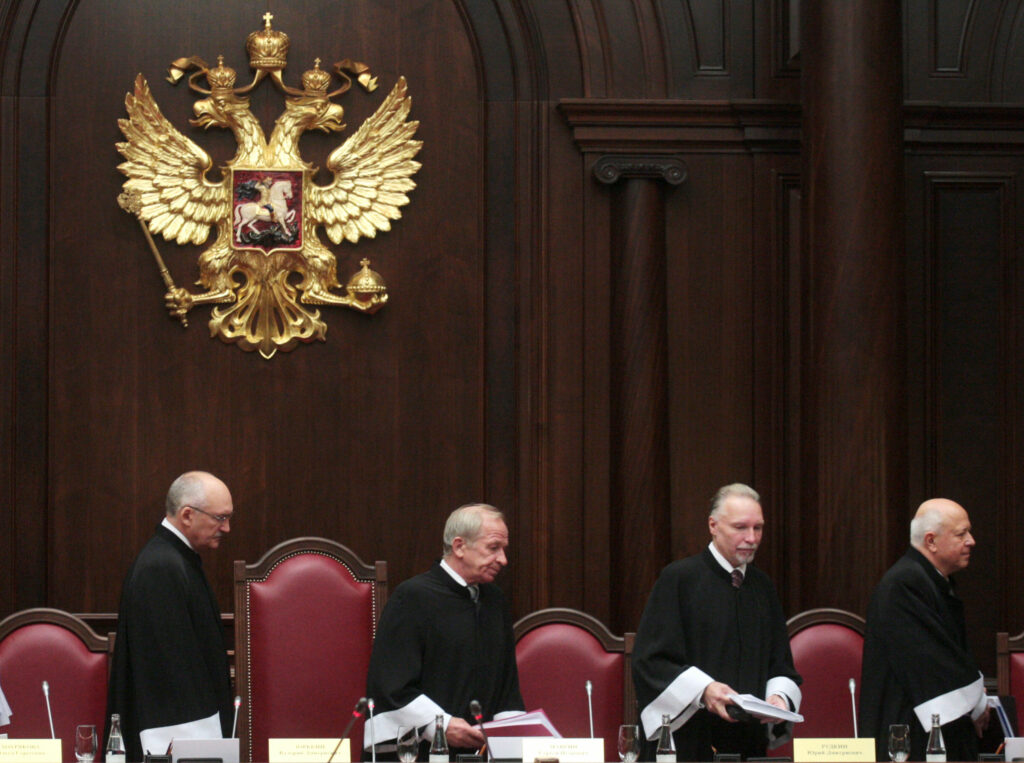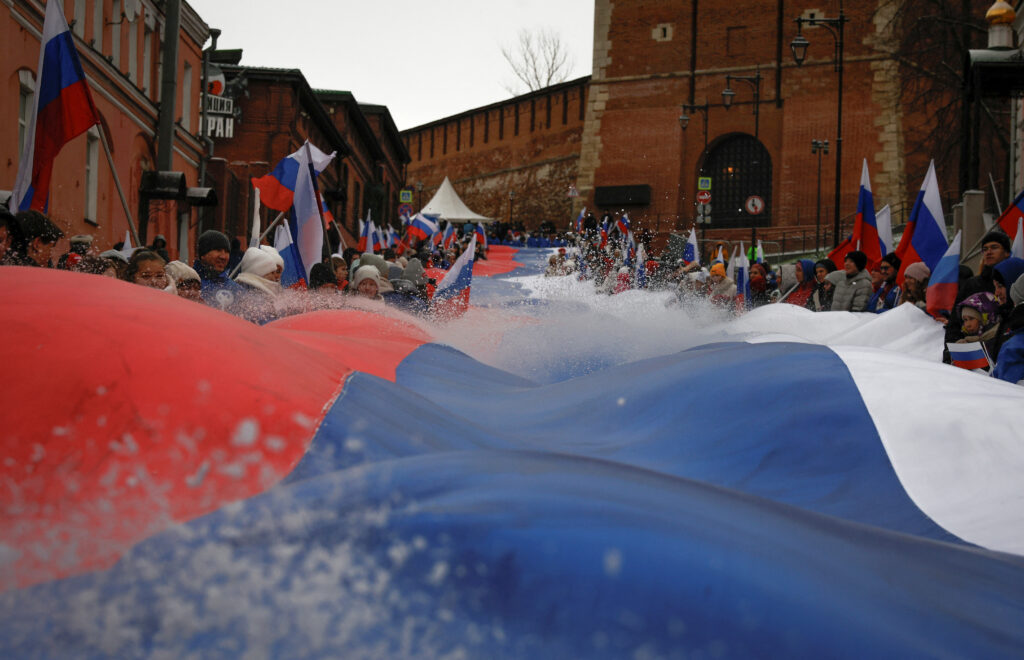In 2020, the Constitution of the Russian Federation was amended at the initiative of Vladimir Putin to reflect the status of the Russian Federation as a successor state to the USSR. This may seem primarily to be a question of ideology. After all, it is no coincidence that the collapse of the USSR is perceived by the Russian president as «the greatest geopolitical catastrophe of the 20th century.» However, the text of the amendment itself (Article 67.1) provides that Russia is the legal successor (continuator) to the USSR in respect of assets located abroad.
Soviet assets and debts have been among the problematic issues in relations between Russia and Ukraine since the collapse of the USSR. One cannot say that the two countries were prepared for a prolonged confrontation and did not intend to resolve the issue peacefully. That said, the dynamics of the negotiations and discussions around the issue in 1991−2022 clearly show the ups and downs in the relations between the two countries, as well as the turning points and main arguments that played a role in the transition to a full-scale military conflict.
Division of property and debt: the ‘zero option’ (1991−1992)
The emergence of new countries in 1991 created new legal and financial problems. One issue that surfaced at the time was related to the property of the former USSR and its division among the republics. The same was true about the foreign debt that the USSR left behind.
In the autumn and winter of 1991, negotiations were held between the republics over the proportions of the USSR’s foreign debt and its foreign assets to be assumed. In December, two agreements were formalised:
- Agreement on Legal Succession in respect of the Foreign Debt and Assets of the Union of Soviet Socialist Republics;
- Agreement on the Property of the Former USSR Abroad.
According to these documents, Russia was to receive 61.34% of foreign assets and debt from the former USSR, Ukraine was allocated 16.37% whereas the rest was distributed proportionally among the other republics.
However, after the dissolution of the USSR, the new countries, except Russia, did not seek to meet their foreign debt obligations. At the same time, they retained the right to a share of Soviet assets abroad. As a result of long and difficult negotiations, the CIS Council of Heads of State in Bishkek adopted a ‘zero option’ settlement on 9 October 1992: the former Soviet republics agreed that Russia would assume all the foreign debt obligations of the USSR. At the same time, it was agreed that Russia would have rights to all external assets left behind by the Soviet Union.
Following the adoption of the ‘zero option’, Russia assumed the foreign policy positions of the USSR and turned from a legal successor state into a continuator state vis-à-vis the USSR. The only republic that consistently refused to recognise the ‘zero option’ was Ukraine.
Ukraine demands its share: Russia’s pressure and the persistence of the Verkhovna Rada (1992−1999)
The relations between Russia and Ukraine after the collapse of the USSR cannot be described as either unambiguously friendly or exclusively hostile. It would be more accurate to note the existence of a number of critical issues which, if not resolved, would prevent the two countries from having stable and long-term relations. These included disputes over the ownership of Crimea and the division of the Black Sea Fleet, the status of nuclear weapons and Ukraine’s share of Soviet property and debts.
The positions adopted by both countries on these issues mostly remained cautious, but the parties occasionally resorted to harsher rhetoric. For instance, on 27 August 1991, the Ukrainian side protested when Yeltsin’s press secretary Pavel Voshchanov stated that «Russia reserves the right to raise the issue of border revision.» In turn, Ukrainian diplomats made efforts to freeze the re-registration of former Soviet property to Russia in most countries of the world. Leading Western players, including Canada, France and Japan, automatically recognised Russia’s right to overseas property of the USSR and re-registered the assets in the name of the new owners. However, a number of other countries, such as Austria, Denmark and Luxembourg, took Ukraine’s protests into account and suspended the process, causing discontentment in Russia.
Tensions between Moscow and Kyiv escalated until the summer of 1992, with the issue of the Black Sea Fleet being most sensitive of all. In April, the presidents of both countries signed decrees reassigning the command of the Black Sea Fleet to themselves. Spring and summer saw difficult negotiations, which resulted in a meeting between Boris Yeltsin and Leonid Kravchuk on 23 June in Dagomys, and signing an agreement on the development of mutual relations between the two countries. In the document, the parties reaffirmed the importance of continued negotiations on the division of the Black Sea Fleet, recognising the priority of finding a diplomatic solution. Furthermore, paragraph 13 of the document stated that part of the former Soviet property would be transferred to Ukraine.
The agreement partly helped to ease the tensions between the countries and find a path to dialogue. However, even then, the two countries’ ability to make concessions was already quite limited. Both Russia and Ukraine were prepared to push their positions through, taking advantage of their opponent’s weaknesses. Russia, for example, was in no hurry to transfer foreign property to Ukraine until the latter agreed to accept the ‘zero option’. The Ukrainian delegation made concessions in view of its large debt under loans and gas supplies, and signed two documents in December 1994:
- Agreement on the Settlement of Succession Issues in respect of the Foreign Debt and Assets of the Former Union of Soviet Socialist Republics;
- Protocol on the Transfer of Buildings and Premises for Occupancy and Normal Operation of Diplomatic, Consular and Trade Missions and their Personnel to Ukraine by 1 June 1995.
The former document effectively signalled Ukraine’s acceptance of Russia’s succession to all foreign assets and debts of the USSR. Under the Protocol, Russia pledged to provide Ukraine with buildings and land plots in 14 countries, including Germany, Greece, Bulgaria, China and Mongolia.
The agreement was supposed to be ratified by the Verkhovna Rada in order to enter into force. When sending the document to parliament, Ukrainian President Leonid Kuchma pushed for its ratification, referring to the difficult economic situation. However, the document was not ratified either in 1994 or any time later. On 19 February 1997, Ukrainian MPs postponed ratification until Russia’s fulfilment of a number of conditions, including:
- providing full information on the composition, book value and market value of foreign property of the former Soviet Union;
- providing data on the size of the USSR’s gold reserve and diamond fund;
- providing a complete inventory of Soviet assets in terms of items and their value;
- Russia’s full application of the free trade regime in dealings with Ukraine.
The Russian party refused to provide the requested data, and the negotiations stalled afterwards. Nevertheless, the dialogue continued. In 1997, Leonid Kuchma and Boris Yeltsin signed the Treaty of Friendship, Cooperation and Partnership as well as several documents on the division of the Black Sea Fleet. At the same time, Russia continued to point out that Ukraine needed to ratify the ‘zero option’ agreement, while the Verkhovna Rada consistently and resolutely refused to do it.
Litigation, negotiations, new litigation (2000−2004)
Despite progress in other areas, the issue of Soviet debts came to a halt in the relations of the two countries from 1994 onwards. In May 2000, Ukrainian Foreign Minister Borys Tarasyuk paid a visit to Moscow. The issue of debts was probably also discussed, but attempts to move things forward failed.
Having exhausted the negotiation pathway, in July 2000 Ukraine announced its intention to approach international bodies and foreign courts to assert its right to the property of the former USSR. In 2001, Ukraine filed a lawsuit in the High Court of Justice in London, demanding that the building of the Russian trade mission be transferred to Ukraine. Interestingly, Kyiv’s chances of victory were assessed as high at the time: the thing was that when re-registering the property from the USSR to Russia, Russian diplomats referred to the ‘zero option’ as allegedly adopted by all the former Soviet republics. The British official bodies were not notified of Ukraine’s opposition on this issue.
The Russian party took the process very seriously: a positive decision in favour of Ukraine could set a precedent for similar litigations with other countries. Therefore, a comprehensive response was elaborated, and efforts were made both to strengthen Russia’s position in court and to soften Ukraine’s claims whenever possible. A pilot project to hand over a building in Poland to Ukraine was considered. Presumably, the building in question was the one mentioned in the 1994 protocol, namely the one located at 7 Szucha Street in Warsaw, which now houses the Ukrainian embassy in Poland. However, Ukraine in fact had occupied the building even before the formal collapse of the USSR and then simply stopped paying rent for it.
In August 2002, news emerged that ownership of real estate in seven more countries could be transferred to Ukraine. However, the idea never came to fruition: apparently Russia became convinced that it could win the litigation and resolve the issue in this way. In this sense, the transfer of the building in Poland proved to be the only precedent.
In 2002, Ukraine’s claim for ownership of the former Soviet trade mission was rejected. The British court recognised Russia’s right to own the building. However, the court ruled that the Russian party had no right to dispose of the building until the issue between Russia and Ukraine got resolved.
Relations between the two countries remained generally difficult, with an armed confrontation over the Tuzla Island in October 2003 and tension over the gas issue, simmering since 1993.
Mutual irritation only intensified after the Orange Revolution victory in 2004. Negotiations on a number of issues, including the debt problem, were temporarily suspended. Thanks to Kyiv’s efforts, re-registration of former Soviet property to Russia in 13 countries (including Austria, Germany, Belgium, Bulgaria and Luxembourg) came to a halt. The property was not transferred to Ukraine in any of those cases, either. In the UK, Japan and Austria, many buildings of Russian institutions did not undergo full re-registration, formally remaining in the Soviet jurisdiction. Russia continued to use them for day-to-day needs, but could face legal difficulties if the buildings were to be sold or change status.
Rubicon: Russia’s repayment of Soviet foreign debt (2005−2007)
After Viktor Yushchenko came to power, the countries continued their dialogue on multiple issues, but their willingness to make concessions was even lower than in the 1990s.
The Russian leaders still hoped to resolve the debt issue, and in February 2005 offered to transfer nine foreign properties to Ukraine for «long-term use.» In response, the Ukrainian Foreign Ministry sent a note requesting details of Soviet assets.
Kyiv’s intransigence increasingly irritated the Kremlin. In 2005, relations between the two countries deteriorated considerably. This manifested itself to the full extent in the gas conflict of 2005−2006 as well as in the issue of debts.
Russia was increasingly inclined to take radical unilateral steps. In 2006, it prematurely repaid the Soviet foreign debt to the Paris Club, and began to take over all of the Soviet Union’s foreign property afterwards. This gave rise to the formula of ‘whoever pays the debts, uses the real estate’.
In response, Ukraine expressed its intention to settle the debt issue in court. However, everything about the litigation was complicated. In March 2007, the Supreme Court of Denmark finally rejected Ukraine’s property claims against Russia. The Supreme Court based its decision on a policy line formulated earlier by the Danish Foreign Ministry. On 29 September 2000, Denmark confirmed its recognition of the Russian Federation as the successor to the USSR, and also reaffirmed its recognition of Russia as the country which assumed all rights and obligations with regard to the Soviet real estate abroad. Pursuant to the Danish Constitution, the Ministry of Foreign Affairs had the power to grant this recognition to Russia. The Supreme Court deemed this act as the basis for the re‑registration of property from the USSR to Russia.
Aggravated confrontation and high hopes for Yanukovych (2008−2012)
Ukraine’s position on the 2008 Russia-Georgia war and its policy of rapprochement with Euro-Atlantic structures was becoming increasingly vexatious to the Russian leaders. This sentiment could not but affect Moscow’s steps, making them more radical. In February 2009, Vladimir Kozhin, head of the Russian Presidential Administration, announced that Ukraine was «groundlessly» claiming former Soviet property abroad.
In the summer of 2009, Russian President Dmitry Medvedev noted that relations between the two countries «had nosedived.» On 11 August, he sent a letter to Viktor Yushchenko, expressing «deep concern about the condition and level of Russian-Ukrainian relations» and also noted «the departure of the Ukrainian party from the principles of friendship and partnership with Russia.» The Ukrainian president’s reply was also quite harsh. Relations between the two countries continued to deteriorate until late 2009.
However, the Russian authorities had high hopes for the presidential election in winter 2010. On 21 January, Vladimir Kozhin expressed hope that the situation with the settlement of disputed property issues would improve once Ukraine has elected a new president. However, after winning the election in the runoff vote, Viktor Yanukovych said that Ukraine had no intention to give up its share of the Soviet legacy. In November 2011, Ukraine again proposed resuming negotiations with Russia on the distribution of Soviet property abroad.
This time, Moscow showed little interest in the subject of negotiations, and in January 2012, Vladimir Kozhin, head of Presidential Administration, described Ukraine’s position as «destructive and inconsistent.» According to his words, Russia was forced to «toughen» its political position and prepare «adequate measures.»
First confrontation (2014−2015)
The issue of Soviet debts fell off the agenda of mutual relations against the backdrop of the Euromaidan, but developed at a moment of sharp confrontation between Moscow and Kyiv.
On 16 March 2014, the day of the pro-Russian «referendum» in Crimea, Ukrainian Prime Minister Arseniy Yatsenyuk instructed the government to prepare a legal position on the return of former Soviet property and assets. In his view, Ukraine has legitimate claims to the property previously appropriated by the Russian Federation.
In August 2014, the Ukrainian government set up a special interdepartmental group dealing with the succession of Soviet Union’s foreign debt and assets. According to Minister Ostap Semerak, it was the first time that the Ukrainian government took a systemic approach to issues of legal succession regarding foreign debt, public debt and assets of the former USSR.
The fight over assets remained on the international arena. In June 2015, Ukraine’s Deputy Justice Minister Natalia Sevostyanova said that Kyiv intended to claim Russia’s foreign assets as compensation for the losses suffered by Ukraine due to the loss of Crimea.
Russia’s claims (2020−2021)
On 26 February 2020, Vladimir Putin announced that Russia had paid the debts of all former Soviet republics, but had still not received the Soviet foreign assets it was entitled to. He said Russia had paid USD 16bn for Ukraine alone, but the process of re-registering property to Russia had not been completed in a number of countries. It should be noted that the Russian president’s statement is exactly half true. Russia indeed had repaid all foreign debt obligations of the USSR (the last debt was repaid to Bosnia and Herzegovina in 2017). However, this was done without the consent of Ukraine, which never received full information about USSR assets from Russia. Consequently, Russia made a gesture of good will which, however, did not bind Ukraine to anything since the legal succession agreement was never ratified by the Verkhovna Rada.
On 12 December 2021, Putin again said that Ukraine still had not fulfilled its obligations to return the former USSR’s assets to Russia in exchange for Moscow’s repayment of its foreign debt. On 13 December, the Ukrainian Foreign Ministry responded by calling Putin’s statement a «manipulation of facts» with no connection to the real state of affairs.
Based on the existing legal framework, Ukraine should not have fulfilled its obligations to Russia. This would have been possible only in the case of a valid succession agreement, which, however, never entered into force. The Russian leaders used Russia’s repayment on its own initiative to put pressure on Ukraine. In exerting pressure, a big role was played not by Ukraine’s legal obligations but the sheer fact that Russia had repaid all the Soviet debt, together with the Ukrainian share.
Russian invasion and international reaction (2022)
The topic of Soviet assets was also mentioned in the Russian president’s address of 21 February 2022 on the recognition of the Donetsk and Luhansk People’s Republics. In particular, Putin said that Russia had paid all Soviet foreign debt in 2017, while Ukraine had not ratified the succession agreements and later «simply refused to implement them.» The Ukrainian leaders were blamed for «making claims about the diamond fund, the gold reserve, as well as the property and other assets of the former Soviet Union abroad.» The Russian president was silent about Russia’s failure to provide Ukraine with information about the assets, the diamond fund and the gold reserve.
Following Russia’s full-scale invasion of Ukraine, Western countries imposed economic sanctions on Russia, including the freezing of Russian assets. A number of countries went even further: in June 2022, Canada allowed the confiscation of sanctioned Russian assets whereas in July UK Foreign Secretary Liz Truss also advocated the confiscation of frozen assets in favour of Ukraine.
On 9 July 2022, The Times published an article about Ukraine’s intention to go to court to claim 18 former Soviet properties located in the UK, with a total worth of GBP 100m.
On 31 July 2022, Ukraine’s ambassador to the UK Vadym Prystaiko, said in an interview with the newspaper Suspilne Novyny that Ukraine intended to go to court to claim one third of the USSR’s foreign property which had been ceded to Russia. The next day, the Russian embassy in London responded by saying that Ukraine’s claims had no legal grounds.
On 7 October 2022, Ukrainian MP and presidential representative to the Verkhovna Rada and the Constitutional Court Fedir Venislavskyi registered a draft resolution «On setting up a Temporary Investigation Commission of the Verkhovna Rada of Ukraine to check the legality of alienation of Ukrainian state property located abroad.» It is expected that the Commission may challenge the alienation of Soviet property to Russia.
***
The dynamics of the dispute over debt show how much the relations between the two countries have changed since the collapse of the USSR. In the 1990s, Russia and Ukraine were willing to find compromise and solutions. Tension in the dialogue existed already at that time, with both sides sometimes taking radical steps, but generally listening to the other party’s position. Starting from the 2000s, Russia increasingly spoke from a position of power, demanding concessions from Ukraine. Ukraine, in turn, sought support from external actors and did not intend to yield ground. After 2004, and particularly in 2005−2006, the Russian leaders showed a tendency towards assuming a tougher stance, which was reflected not in an intention to find a compromise, but rather in a desire to push their decision through. At the same time, Kyiv’s opinion was taken into account to an increasingly lesser extent: Russia was prepared to pursue a policy without taking the position of Ukrainian authorities into account, without being able to fully influence it. The rejection of a meaningful dialogue and a shift to imposing one’s position finally took shape in the 2010s, culminating in the war of 2022.










